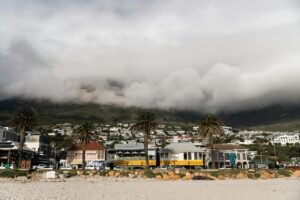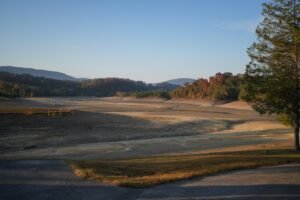What is a Day Zero Drought? New Study Warns Cities Could Run Dry by 2030
A new study warns that extreme water shortages, known as “day zero droughts,” could impact major urban areas including cities in the United States, the Mediterranean, and southern Africa before 2030.
The study, published in Nature Communications, projects that nearly three-quarters of the world’s drought-prone regions are at risk of facing these severe water shortages by 2100 if greenhouse gas emissions are not significantly reduced. Researchers warned that more than one-third of these at-risk regions could face this crisis within the next decade.
What is ‘Day Zero’?
The concept of “day zero” describes the critical point when a city’s water reservoirs fall to such low levels that authorities are forced to shut off most municipal water taps.
It represents a crisis scenario where the local water demand from people, industry, and agriculture surpasses the available regional water supply provided by rainfall and reservoirs. In this situation, residents would no longer get water from their household taps and would have to rely on emergency distribution points.
A Reality, Not Just a Theory
This term gained global prominence in 2018 when Cape Town, South Africa, narrowly avoided a day zero scenario. Following a long-term drought, the city’s dams neared a critical level. This forced the implementation of strict water-use restrictions, which, combined with eventual heavy rains, allowed the city to avert the shut-off for its 4 million residents.
The event was not isolated. In 2019, Chennai, India, declared it had reached day zero after all four of its main city reservoirs ran dry. The crisis left approximately 11 million people dependent on water brought in by trucks and trains from other areas, with people lining up for hours for small allocations.
Key Findings of the 2025 Study
Researchers used climate models that factor in human water consumption as well as rainfall and river flow to project future risk. The team looked at two different scenarios: one of intermediate greenhouse gas emissions, which aligns with the world’s current path, and a second, higher-emission scenario.
- Under the higher-emission scenario, the French CNRM model projects that 74% of drought-prone regions will face severe water scarcity by 2100.
- The study found that the frequency of day zero droughts is projected to grow sharply in the coming decades.
- Researchers noted the surprising speed at which these conditions could emerge in numerous locations, driven by global warming.
- The study also warned that the recovery time between severe drought events may shorten, particularly in the Mediterranean, southern Africa, and Australia, making it much harder for regions to replenish water supplies.
Climate scientists not involved in the work concur that the findings illustrate an increasing, multi-front attack on water resources that is already emerging and particularly impacts urban populations.
Which Cities Are at Risk?
The new study identified several hotspot regions where day zero conditions could emerge.
According to projections from the CNRM model, U.S. cities at risk of facing severe water scarcity by 2030 include Chicago, Washington, D.C., Phoenix, San Diego, and Milwaukee.
By 2060, this list is projected to grow, potentially including Minneapolis, Las Vegas, Baltimore, Kansas City, Missouri, and Jacksonville, Florida.
By the end of the century, researchers said day zero conditions could threaten some 750 million people globally, including 470 million in cities.
What Causes Water Scarcity?
The risk of a city reaching day zero is driven by a complex combination of factors, which vary by location.
- Climate Change: Rising temperatures lead to a “thirstier” atmosphere that drains freshwater from continents more rapidly. It also increases the frequency and severity of droughts by altering precipitation patterns.
- Population Growth and Urbanization: Rapidly growing cities concentrate a high demand for water for domestic, industrial, and municipal use, placing immense pressure on existing water supplies.
- Inadequate Water Management: Poor governance, aging or inefficient infrastructure, and a lack of investment in water systems contribute to waste and loss.
- Over-extraction: The depletion of water sources, particularly the over-pumping of groundwater aquifers for agriculture and industry, drains reserves faster than they can be naturally replenished.
- Pollution: Contamination of rivers, lakes, and groundwater from industrial effluent, agricultural runoff, and improper waste disposal renders existing water sources unusable without extensive treatment.
Solutions and Moving Forward
Experts agree that avoiding day zero requires a dual approach focused on both adaptation and mitigation.
Local and integrated water management strategies are essential. This includes diversifying water sources by investing in technologies like rainwater harvesting, stormwater capture, greywater recycling, and desalination. It also requires upgrading infrastructure to reduce leaks and improve efficiency.
However, researchers stress that these adaptation strategies alone are not enough. The most critical component is climate mitigation, which involves rapidly cutting greenhouse gas emissions to slow the rate of global warming and limit the long-term intensification of droughts.
Learn more about sustainable solutions for Real Estate and the built environment.



